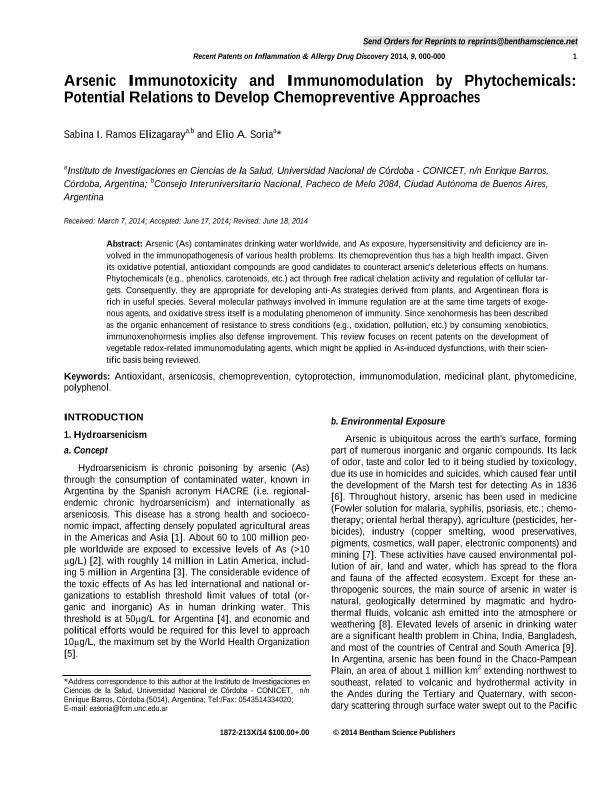Artículo
Arsenic immunotoxicity and immunomodulation by Phytochemicals: potential relations to develop chemopreventive approaches
Fecha de publicación:
07/2014
Editorial:
Bentham Science Publishers
Revista:
Recent Patents on Inflammation and Allergy Drug Discovery
ISSN:
1872-213X
e-ISSN:
2212-2710
Idioma:
Inglés
Tipo de recurso:
Artículo publicado
Clasificación temática:
Resumen
Arsenic (As) contaminates drinking water worldwide, and As exposure, hypersensitivity and deficiency are involved in the immunopathogenesis of various health problems. Its chemoprevention thus has a high health impact. Given its oxidative potential, antioxidant compounds are good candidates to counteract arsenic's deleterious effects on humans. Phytochemicals (e.g., phenolics, carotenoids, etc.) act through free radical chelation activity and regulation of cellular targets. Consequently, they are appropriate for developing anti-As strategies derived from plants, and Argentinean flora is rich in useful species. Several molecular pathways involved in immune regulation are at the same time targets of exogenous agents, and oxidative stress itself is a modulating phenomenon of immunity. Since xenohormesis has been described as the organic enhancement of resistance to stress conditions (e.g., oxidation, pollution, etc.) by consuming xenobiotics, immunoxenohormesis implies also defense improvement. This review focuses on recent patents on the development of vegetable redox-related immunomodulating agents, which might be applied in As-induced dysfunctions, with their scientific basis being reviewed.
Archivos asociados
Licencia
Identificadores
Colecciones
Articulos(INICSA)
Articulos de INSTITUTO DE INVESTIGACIONES EN CIENCIAS DE LA SALUD
Articulos de INSTITUTO DE INVESTIGACIONES EN CIENCIAS DE LA SALUD
Citación
Ramos Elizagaray, Sabrina I.; Soria, Elio Andres; Arsenic immunotoxicity and immunomodulation by Phytochemicals: potential relations to develop chemopreventive approaches; Bentham Science Publishers; Recent Patents on Inflammation and Allergy Drug Discovery; 8; 2; 7-2014; 92-103
Compartir




